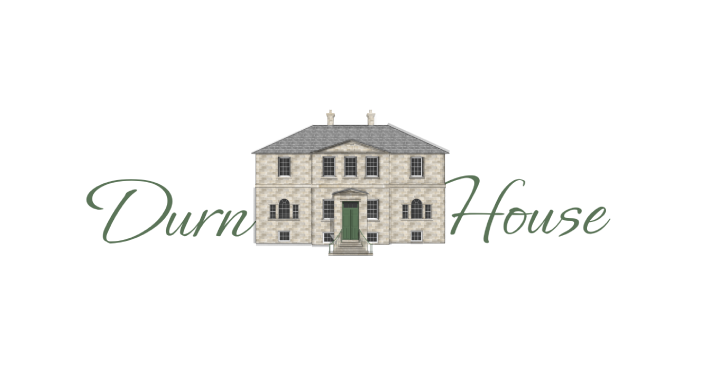Above is the original Durn House circa 1758, viewed from the South West
The original ‘Durn Estate’ goes back to the 16th Century, and possibly before that. Among the papers of Gordon of Letterfourie, are the writs of Durn (then spelt Durne), ranging from 1508 to 1604, with the estate occupied by Currours during the reign of James IV to Sir William Ogilvie of Strathearn.
Sir Thomas Menzies was the next owner, and his son (also called Thomas) inherited Durn in August 1593, becoming provost of Aberdeen. He has been credited with finding the famous ‘Kellie Pearl’, said to be the largest freshwater pearl ever discovered, not only in Scotland, but the entire United Kingdom.
The old Durn House was bought by Sir William Dunbar (c1640-1710), (who was knighted by Charles II), from the Menzies family.
In 1621, the estate returned to the Ogilvies, and remained so, until 1678 when the lands, barony and mansion house were acquired by William Dunbar of Kintessack. By 1695 he had dropped the title of Kintessack in favour of Durn. William Dunbar was the son of Ninian Dunbar, Sheriff of Banff, who sentenced James MacPherson (see more on page 29) to hang. MacPherson played a tune on his violin while being led to his death, since known as ‘Macpherson’s Rant’, famously sang by Robert Burns.
William’s son, Sir James Dunbar of Durn was very interested in mechanical designs. In 1720, James Ferguson set out to visit Durn House with maps, his globe and a home-made clock. James was invited to stay in order to clean local noblemen’s clocks and time-pieces. James Ferguson went on to become one of the UK’s most famous astronomers.
The hand-drawn sketch from 1758, below, shows Durn House before the present building. Notice the stone gateposts here, which still stand today, and which are listed in their own right.
More on the history of Durn House will be found in every guests room, along with the meaning of the name of the suite you’re staying in and the history of some features in the room.
Take a stroll along the leafy Durn Road, formally ‘Lovers Lane’, and you will eventually come across Durn House. A stunning Scottish Georgian Mansion House built c. 1770, sits quietly and unobtrusively. Tucked into a corner, surrounded by huge trees and old stone walls, alongside the Burn of Durn trickles under an ancient stone bridge on its journey to the sea.
Below is the first verse of a poem referring to Durn House which is mentioned in the book ‘Portsoy Past and Present’ by James Slater:
‘Tis said, “ In spring a young mans he’rt tae thochts o’ love will turn,”
“What better place fir sic’ a theme than on the road roon’ Durn and so oot by the Boolin’ Green, you’ll find this weel-kent-glade, Whaur lovers aft stroll hand in hand, aneath its tree-lined shade”.
Durn House stands majestically on the outskirts of Portsoy. It has links with the Scottish Crown Jewels, the romantic tale of Bonnie Prince Charlie as well as the Battle of Culloden.

